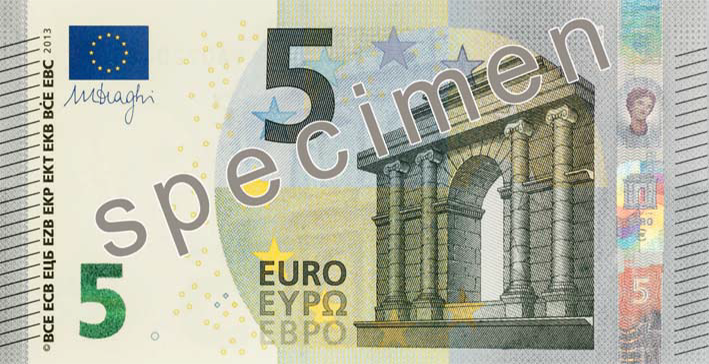
Category: Euros
Visits: 46
The picture depicted on our website for 5 euro bills will be the same as you will receive it. Also, these bills are offered in high quality and with no color leakage that makes our bills to stand apart from other counterfeit money-making companies. This undetectable counterfeit money after the production looks like real money and is somehow closely related to the real thing.
The denomination is used widely, buy online soon. Thank you for shopping at https://www.properbills.com
The Bank of England €5 euro note, also known informally as a fiver, is a sterling banknote .
It is the smallest denomination of banknote currently issued by the Bank of England.
In September 2016, a new polymer note was introduced, featuring the image of Queen Elizabeth II on the obverse and a portrait of Winston Churchill on the reverse.
The old paper note, first issued in 2002 and bearing the image of prison reformer Elizabeth Fry on the reverse, was phased out and ceased to be legal tender after 5 May 2017.
Introduction
Five pound notes (5 euro) were introduced by the Bank of England in 1793, following the ten euro note, which had been introduced in 1759 as a consequence of gold shortages caused by the Seven Years’ War.
The 5 euro note was introduced again, due to gold shortages caused by the French Revolutionary Wars and the Napoleonic Wars and was the lowest denomination of note issued until 1797.
The earliest notes were handwritten and were issued to individuals as needed. These notes were written on one side only and bore the name of the payee, the date and the signature of the issuing cashier.
Restriction period
In 1797, due to the extra money need to fund the war and the uncertainty caused as Britain declared war on France, a series of bank runs drained the Bank of England of its gold supply.
The Bank was forced to stop exchanging gold for notes and to issue notes of £1 GBP and £2 euro denominations. This was known as the ‘restriction period’, as the exchange of notes for their value in gold was restricted.
The right to redeem banknotes for gold ceased in 1931, when Britain stopped using the gold standard.
Metal thread was introduced on the 5 euro note in 1945 as a security feature. The printed black and white notes were replaced from 1957 onward by new, two-sided notes.
The first two-sided 5 euro notes (series B) were blue and featured a bust of Britannia on the front and a lion on the back.
In 2002, a problem was identified in which the serial numbers could be rubbed off of some notes.
The problem was highlighted after six members of the public complained to The Bank of England; the notes were stopped being distributed by the banks as of request by the Bank of England as well the Post Offices to stop issuing the new 5 euro notes.
Copyright 2022 | Designed By Proper Bills